Digital Poster
Diffusion Acquisition
ISMRM & ISMRT Annual Meeting & Exhibition • 10-15 May 2025 • Honolulu, Hawai'i

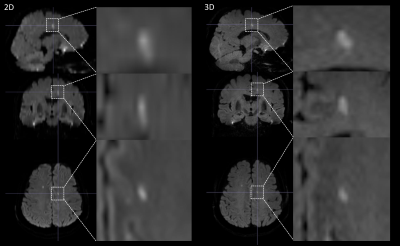 |
Computer Number: 49
2150. Towards
genuine 3D DWI with physiological motion compensation: a
clinical study on patients with small ischemic lesions
Y. Wang, J. Jing, D. Weng, J. Zhang, T. Qian, W. Liu, K.
Zhou, Y. Wu, B. Zhang, Q. Li, Z. Zhang
MR Rearch Collaboration Team, Siemens Healthineers Ltd. , Beijing, China
Impact: This study provide a novel and easy-access 3D
DWI sequence for clinical study.
|
|
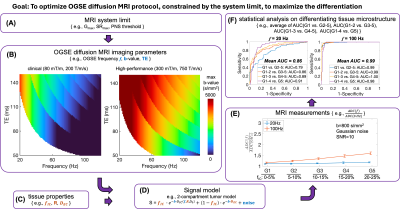 |
Computer Number: 50
2151. Gradient
performance-constrained optimization of OGSE time-dependent
diffusion MRI for tissue microstructure imaging
A. Zhu, S. Cho, M. Shao, Y. Mazaheri, C. Guttmann, H. D.
Morris, J. K. DeMarco, M. Fung, J. McNab, R. Huang, O. Akin,
T. Foo
GE HealthCare, Niskayuna, United States
Impact: Radiologists, MR physicists, and engineers who
need optimized imaging protocol of OGSE time-dependent
diffusion MRI to assess tumor microstructure and improve
clinical diagnosis of tumor grading and evaluation of
treatment effectiveness.
|
|
 |
Computer Number: 51
2152. Acquisition
Optimization of Ultra-High Resolution Diffusion MRI for the
Next-Generation 7T scanner
A. Vu, A. Avram, E. Walker, K. Schilling, K. Magdoom, A.
Beckett, S. Bunge, P. Basser, D. Feinberg
University of California, San Francisco, San Francisco, United States
Impact: Our study sheds light on the complex and often
opaque diffusion acquisition parameter space to help the
diffusion community more readily achieve mesoscale diffusion
imaging, which would facilitate better characterization of
complex crossing fibers as well as cortical-depth-dependant
brain connectivity.
|
|
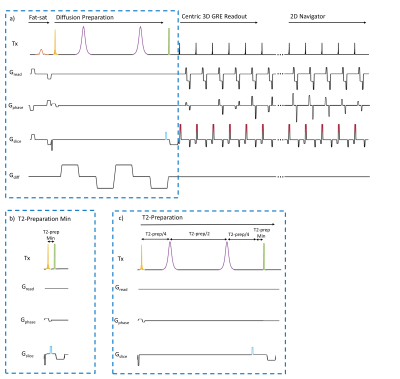 |
Computer Number: 52
2153. 3D
distortion-free, T2 and ADC mapping in a single sequence for
Quantitative Prostate MRI at 3T
R. Tomi-Tricot, S. McElroy, Y. Ott, O. Darwish, S. Kinsella,
S. Jelijeli, V. Goh, R. Neji
King's College London, London, United Kingdom
Impact: This work introduces a streamlined
single-sequence acquisition for 3D distortion-free T2 and
ADC mapping in the prostate which may enable the development
of an efficient and robust quantitative single-acquisition
prostate MRI screening programme.
|
|
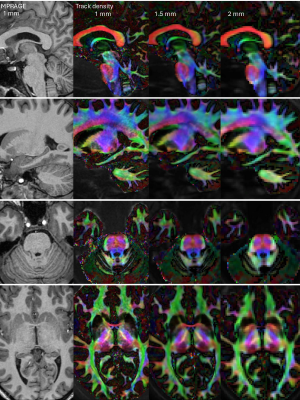 |
Computer Number: 53
2154. High-resolution
whole-brain diffusion MRI using a head-only ultra-high
performance gradient system at 3T
J. Guerrero-Gonzalez, D. Dean III, L. LeMerise, S.
Kecskemeti, A. Alexander
University of Wisconsin-Madison, Madison, United States
Impact:
High-performance gradient systems significantly enhance dMRI speed and spatial resolution, facilitating data collection across populations and allowing for more accurate quantification of brain cortex micro-structure and fine structures in regions like the brainstem. |
|
 |
Computer Number: 54
2155. Distortion-Free
Orbit Diffusion-Weighted Imaging using Focused DIADEM with
Improved Shot-to-Shot Phase Correction
M-H In, N. Campeau, J. Trzasko, E. Borisch, D. Kang, J.
Huston III, Y. Shu
Mayo Clinic, Rochester, United States
Impact: Focused DIADEM diffusion-weighted imaging
enhances clinical orbit imaging by reducing artifacts,
improving spatial resolution, and enabling more accurate
diffusion characterization of orbital structures and
associated pathologies.
|
|
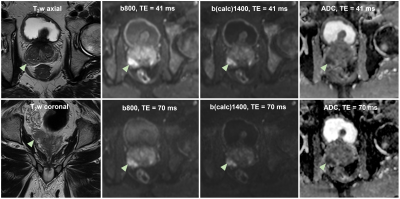 |
Computer Number: 55
2156. Pros
and cons of high-performance gradient enabled short-TE prostate
DWI – a prospective study
D. Skwierawska, M. Bachl, D. Hadler, H. Schreiter, M. Uder,
R. Janka, F. Laun, S. Bickelhaupt
Institute of Radiology, Uniklinikum Erlangen, Friedrich-Alexander-Universität Erlangen-Nürnberg (FAU), Erlangen, Germany
Impact: Shortening TEs beyond the PI-RADS v.2.1
recommendations in prostate DWI increases lesion conspicuity
and image quality, but compromises the ADC diagnostic
performance. Further studies are needed to validate our
findings and derive specific recommendations on prostate DWI
acquisition protocols.
|
|
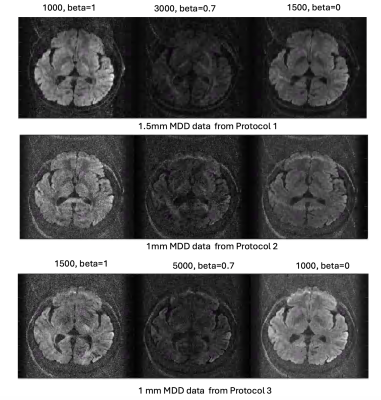 |
Computer Number: 56
2157. Exploiting
short TE on MAGNUS scanner using 3D Multi-slab Diffusion
Weighted Imaging for High Resolution Multi-dimensional Diffusion
Encoding
C-Y Lee, M. Mani
University of Iowa, Iowa City, United States
Impact:
Our method provides a novel approach to improve the SNR for multi-dimensional diffusion encoding which translates to robust recovery of neurological biomarkers from the measurements at high resolutions suited to study microstructural changes in the brain. |
|
 |
Computer Number: 57
2158. Segmented
Thick-Slab 3D Brain DWI with Motion-Compensated Diffusion
Encoding Evaluated on an MRI System with Ultrahigh Gradient
Performance.
J. Johansson, S. Maier
University of Gothenburg, Gothenburg, Sweden
Impact:
Gradient moment nulling combined with ultrahigh gradient effectively suppresses motion-related phase shifts produced by diffusion encoding that otherwise interfere with spatial encoding during segmented scanning, potentially enabling artifact-free in-vivo 3D DWI at unprecedented spatial resolution. |
|
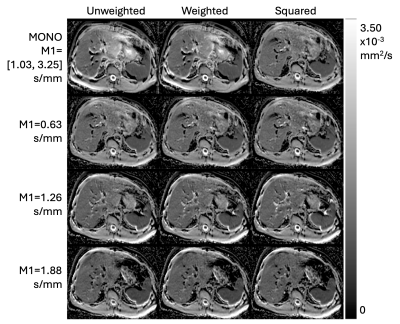 |
Computer Number: 58
2159. Optimizing
Acquisition and Post-Processing Pipeline for Motion-Robust
Diffusion Weighted Imaging of the Liver
A. Houck, G. Simchick, S. Volety, D. Hernando
University of Wisconsin - Madison, Madison, United States
Impact: Advanced acquisition and post-processing
pipelines, including jointly optimized motion-robust
diffusion imaging (MODI) and weighted averaging, may improve
the quantitative performance of ADC in the liver. This
improved quantification may enhance the detection, staging,
and treatment monitoring of liver disease.
|
|
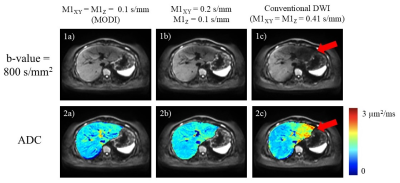 |
Computer Number: 59
2160. Directional
M1-Optimized DWI for Robust Motion-compensation and
Blood-suppressed Liver Imaging
G. Dan, S. Zhang, Z. Zhong, Z. Li, B. Jiang, Q. Liu, J. Xu
United Imaging Healthcare North America, Houston, United States
Impact: This technique enhances motion compensation and
blood signal suppression in liver DWI, providing clearer and
more accurate liver assessments. This technique may improve
diagnostic capabilities in various imaging applications,
potentially benefiting broader areas such as breast and
brain imaging.
|
|
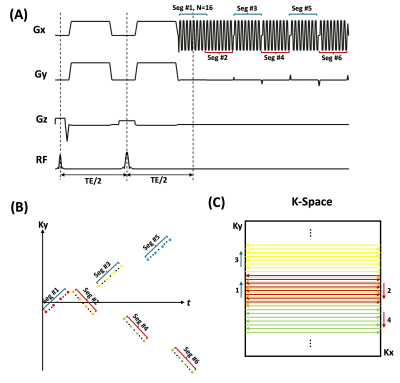 |
Computer Number: 60
2161. Single-shot
Center-Overlapped EPI for distortion-frEe diffusion MRI (SCOPE)
Q. Liu, B. Bilgic, D. Erdogmus, L. Ning, Y. Rathi
Brigham and Women's Hospital, Harvard Medical School, Boston, United States
Impact: We proposed a novel single-shot
center-overlapped EPI readout for distortion-free EPI,
SCOPE. With overlapped segments, our method estimates the ∆B0 field
map from the single-shot data for each diffusion direction.
Further, our method has the potential to reduce the TE.
|
|
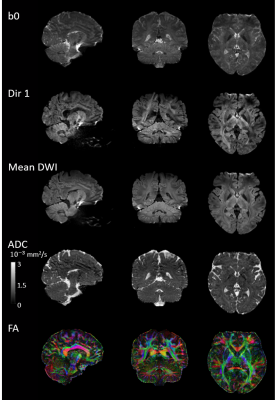 |
Computer Number: 61
2162. Towards
genuine 3D DWI with physiological motion compensation: the
feasibility on 3T with high performance gradients
Y. Wang, J. Jin, D. Weng, J. Zhang, Q. Li, K. Zhou, B.
Zhang, T. Qian, W. Liu
MR Rearch Collaboration Team, Siemens Healthineers Ltd. , Beijing, China
Impact: Our results indicate that at ultra high spatial
resolution, direct 3D DTI is superior to 2D SMS scan in
terms of SNR. With high performance gradients, 3D DTI using
M2 is more practical.
|
|
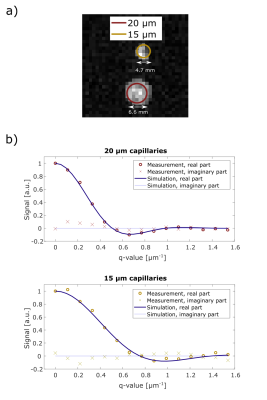 |
Computer Number: 62
2163. Localized
diffusion pore imaging (DPI) of different pore sizes
L. Oswald, J. Rauch, P. Jimenez, M. Ladd, F. Laun, T. Kuder
German Cancer Research Center (DKFZ), Heidelberg, Germany
Impact: Localized diffusion pore imaging allows
reconstructing several pore sizes in different regions from
a single sample. This was achieved using a diffusion pore
imaging sequence with imaging readout and a phantom
containing capillaries of two different sizes.
|
|
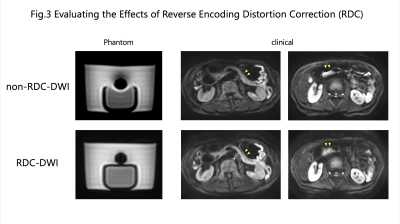 |
Computer Number: 63
2164. Optimal
scan parameters for DWI with reverse encoding distortion
correction: a phantom study and clinical feasibility study in
the pancreas.
Y. Somiya, T. Tsuboyama, R. Shimada, S. Horii, N. Yoshida,
T. Noda, K. Tsukamoto, A. Kusaka, K. Sofue, T. Murakami
Center for Radiology and Radiation Oncology, Kobe University Hospital, Kobe, Japan
Impact: To maximize the value of the RDC technique in
DWI, the parallel imaging factor and bandwidth should be
reduced because RDC efficiently reduces image distortion and
the lower parallel imaging factor and bandwidth increase SNR
and enable high-resolution DWI.
|
|
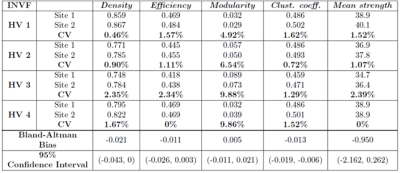 |
Computer Number: 64
2165. Microstructure-Weighted
Connectomics: dual-site validation of a diffusion MRI protocol
for mapping brain structural connectivity
M. Cavallo, M. Ricchi, D. Tyler, C. Testa, J. Grist
University of Bologna, Bologna, Italy
Impact:
This study demonstrates the reproducibility of microstructure-weighted connectomes, supporting their use in investigating brain connectivity. By integrating detailed microstructural information from advanced models like NODDI, these connectomes offer richer characterisation of brain structures, contributing to improved understanding of brain diseases. |
The International Society for Magnetic Resonance in Medicine is accredited by the Accreditation Council for Continuing Medical Education to provide continuing medical education for physicians.